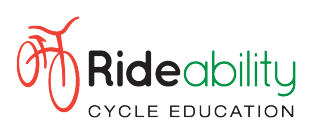 MTB night riding guide
MTB night riding guide
The evenings may be getting darker earlier, but that’s no reason to stop mountain biking. In fact, it opens up a whole new (albeit less well lit) world – night riding! Rideability gives you the low-down on what you need, what to expect, and how to get started.
1. Find a buddy to ride with.
It is recommended that you always ride with someone when MTB’ing at night. Firstly, it’s much more fun. Secondly, it’s safer and more sensible than riding alone. Just be careful when you stop for a chat; if you have a light on your helmet and you turn to look at your riding companions, you could end up dazzling them. If you do choose to ride solo make sure someone knows exactly the route you are taking and don’t deviate from the planned route. It is less than ideal to crash in the dark and no one knows where you are.
2. Route planning
When planning your route it is important to consider the following things.
- The technical difficulty of trails should match the ability of riders.
- Exposure to the weather should the weather change quickly.
- Access to and remoteness of the trail network and route (important should you require assistance off the trails).
- Support capabilities, such as vehicle support.
- Available communication systems and level of phone coverage.
3. What to pack
Some great tools are the Garmin connect App – live track (for tracking) and Emergency+ app – has a 000 call function and gives exact location (latitude and longitude)
What to pack in your pack |
What to pack in your car |
|
|
4. Light it up
Good lights used to be heavy, expensive and last only an hour or so but bulb and battery technology means that you can now get lightweight, convenient and reliable illumination that offers you more brightness than a lot of car headlamps. Designs vary; some are a single unit with integrated battery whereas others have a battery you carry on your bike or in your pocket. Brightness varies a lot too, as does the weight. It all comes down to how much you want to spend as prices range from $100-$1000!
There are loads of light reviews about in magazines and websites. It’s definitely worth reading up before you spend.
Some people use one light mounted on their bars whereas others opt for an additional, smaller one on their helmet. Having a second light offers a few important advantages:
- you can see round corners before you turn your bars which allows you a bit more warning about what’s to come next
- you can easily see what you’re doing if you stop to fix a puncture or raid your pack for provisions
- and most importantly, you have a back-up if for any reason your main light fails.
On the downside is the cost of a second light and for some, the extra weight on their helmet.
Other than lights, in theory it’s no different from riding in the day yet it feels much more exciting. You’ll probably go much slower but it seems loads faster, everything rushes up on you when you can only see as far as your light beam. Watch out for wildlife you would not normally see!
5. Stay relaxed on the bike
When first starting night MTB’ing, riding rocks and roots can take on an extra challenge. It is important to keep nice and relaxed on the bike so if you hit something you haven’t seen you don’t go flying. It’s a good skill to have anyway and riding at night makes you really practise it.
6. Layer up
It is worth taking an extra layer with you. If you do have to stop for a puncture you find you get cold much quicker than you do in the day.

Social